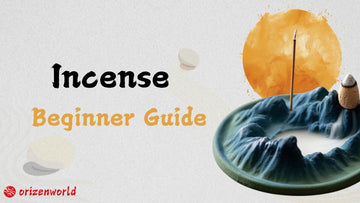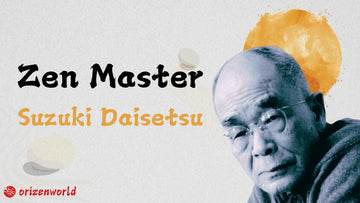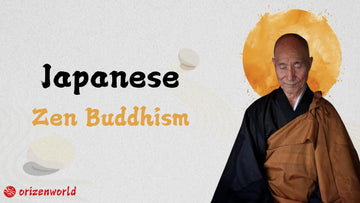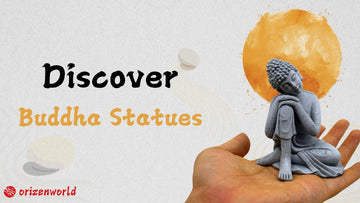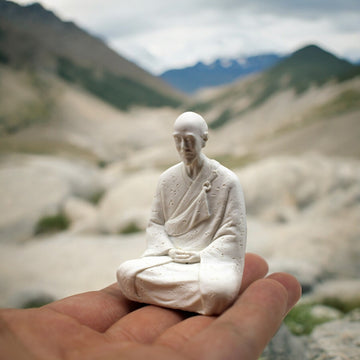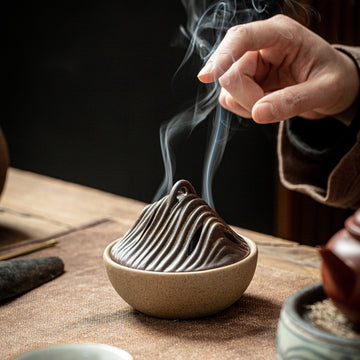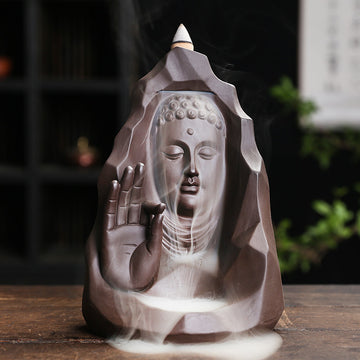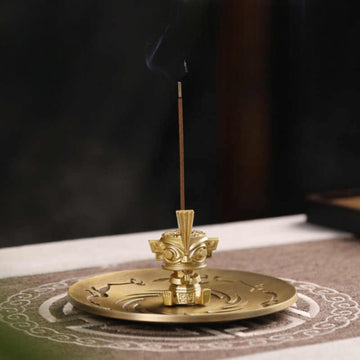More and more people are choosing incense as a tool for relaxation and therapeutic relief. The gentle smoke and soothing aromas create a calming atmosphere, offering a much-needed break from daily stress. However, for beginners, stepping into the world of incense can feel overwhelming due to the abundance of information online. Many are unsure where to start or how to choose the right incense for their needs.
In this post, I aim to guide you through the basics of incense, exploring different types, holders, and burning tips. Whether you’re looking to enhance your meditation practice or simply create a tranquil space, this guide will help you begin your journey into the art of enjoying incense.
Incense has a rich history that dates back thousands of years, originating in ancient civilisations such as Egypt, Mesopotamia, India, and China. Its earliest recorded use was in religious rituals, where natural resins and aromatic woods like frankincense and myrrh were burned to honour deities and purify sacred spaces.
Over time, the craft of incense-making spread across continents, with each culture developing unique methods and blends to suit their spiritual practices and daily lives. In Japan, for example, the art of Kōdō (the way of incense) emerged, transforming the burning of incense into a refined cultural experience.
At its core, incense is a blend of aromatic materials that, when burned, release fragrant smoke. It can come in various forms, such as sticks, cones, coils, or loose powders. People use incense for a variety of purposes: to create a serene environment, aid meditation, mark rituals, or even repel insects.
The act of burning incense often holds symbolic meaning, representing the transformation of physical matter into an ethereal essence that ascends to the heavens, connecting the earthly and the divine.
The cultural and spiritual significance of incense is profound and universal. Across the globe, it has been a tool for prayer, healing, and meditation. It bridges cultural divides, offering solace, inspiration, and connection in times of celebration and contemplation alike.
The classification of incense is primarily based on its form, with each type offering unique characteristics and uses. Stick incense is one of the most common types, available in two main forms: regular and masala.
Regular stick incense has a core, typically made of bamboo, with a thin layer of aromatic material wrapped around it.
Masala incense sticks, on the other hand, are crafted by rolling a paste of natural ingredients directly onto the stick, resulting in a richer and more complex aroma. Both types are ideal for meditation, relaxation, or daily rituals due to their convenience and steady burn.

Masala incense, originating from India, is made by hand-rolling a paste of natural ingredients onto sticks, offering rich, complex aromas often used in meditation, rituals, and spiritual practices.
Cone incense, another popular variety, is compact and shaped to release concentrated aromatic smoke as it burns. A unique subset of cone incense is backflow incense, designed to create a stunning visual effect where the smoke flows downward, mimicking the movement of water.

Cone incense, also known as pagoda incense, is made by moulding powdered incense into a cone shape. Its structure allows for faster burning, typically lasting about 15 minutes, while quickly dispersing aroma over a wide area.
This type is often used with specially designed holders to enhance the sensory experience. Coil incense, with its spiral shape, is prized for its long-lasting fragrance. It is ideal for larger spaces or occasions requiring prolonged use, such as temple ceremonies or evening gatherings.
Powder and loose incense represent traditional methods of incense use, where finely ground aromatic materials are sprinkled onto a heat source like charcoal. This type allows for greater customisation, enabling users to blend different ingredients to create personalised scents. With its deep cultural roots, powder incense is often used in spiritual ceremonies and traditional rituals, making it a timeless choice for enthusiasts. Each type of incense offers its own unique experience, catering to different preferences and needs.
Selecting the right incense holder is essential for safely and effectively burning incense. Stick incense holders are among the most common and practical options. They typically feature a simple, elongated base with a hole to secure the incense stick. The base collects ash as the stick burns, making cleanup easy.
Stick holders come in various materials such as wood, ceramic, and metal, offering both functionality and aesthetic appeal. Their lightweight and compact design make them perfect for everyday use.
For cone incense, burners are available in both open and closed styles, each with distinct features. Open cone burners often have a small dish or platform to hold the cone, allowing the smoke to disperse freely into the surrounding space.
Closed burners, on the other hand, often feature intricate designs or covers that allow smoke to escape through specific openings, creating a more controlled and decorative effect.
Backflow burners, a type of closed burner, are specifically designed to create a mesmerising smoke cascade.
Specialty holders cater to coil incense and loose incense, providing unique designs to suit their needs. Coil incense holders are typically circular or spiral-shaped, accommodating the incense’s coiled form.
Loose incense burners often include a heat-resistant base for charcoal or a mesh surface to hold the powdered incense, ensuring safe and even burning.
Choosing an incense holder based on aesthetic and material considerations is an important aspect to keep in mind, as it greatly influences your overall experience.
A well-designed holder with pleasing aesthetics can effortlessly uplift your mood and enhance your enjoyment.
Materials like ceramic and brass offer durability, while wooden or bamboo designs provide a natural and earthy feel. Decorative holders can enhance your space, blending seamlessly with your home’s style while reflecting your personal taste.
Choosing a high-quality holder ensures both safety and an enjoyable incense experience.
Burning incense is a simple yet rewarding practice, but it’s essential to follow safety measures to ensure a safe and pleasant experience. Start by choosing an appropriate incense holder that suits the type of incense you're burning, whether it’s a stick, cone, or coil.
Place the incense in the holder, ensuring it is secure and upright. Light the tip of the incense with a match or lighter, allowing the flame to catch for a few seconds. Gently blow out the flame, leaving the incense to smoulder and release aromatic smoke.
Proper ventilation is crucial when burning incense to ensure the room remains comfortable and safe. Make sure the area is well-ventilated, with windows open or a fan running, to avoid inhaling excessive smoke.
Never leave incense burning unattended, and always place it on a non-flammable surface away from any flammable objects, including curtains, papers, or other materials. Keep incense out of reach of children or pets to prevent accidents.
To maintain the aroma without overpowering the space, burn incense in small, controlled amounts. Avoid burning incense for prolonged periods in confined spaces, as the scent can become overwhelming.
It’s also helpful to choose milder, lighter scents if you're new to using incense.
Lastly, always extinguish incense safely when finished. Douse the incense stick or cone by pressing it against a fireproof surface, ensuring that it is completely out before leaving the area. This practice will help keep both the space and surroundings safe.
Incorporating incense into your daily routine can transform the experience from a simple habit to a meaningful ritual. One of the most common intentions for burning incense is relaxation and meditation.
The calming aromas of incense help soothe the mind and promote focus, creating an ideal environment for quiet contemplation or mindfulness practices.
Whether you’re meditating, practicing yoga, or simply unwinding after a busy day, the presence of incense can deepen your sense of peace and presence.
In many cultures, incense is an essential element of spiritual rituals and ceremonies. In Buddhist and Shinto traditions, incense is often burned as an offering to deities or ancestors, signifying respect and devotion.
In these settings, the act of lighting incense becomes a sacred ritual, following specific steps and intentions. A small Buddha statue or other sacred symbols may be placed on the altar, and incense is lit with reverence, offering prayers or intentions with each whiff of smoke. This practice helps foster a deeper connection with the divine and with one's spiritual journey.

In East Asia, Buddhists burn incense as part of a specific ritual, following a set of standardized steps. This structured approach demonstrates a deeper devotion and reverence towards Buddha, enhancing the spiritual significance of the practice.
Incense also plays a role in enhancing ambiance and home fragrance. Beyond its spiritual uses, incense can be used to create a pleasant and inviting atmosphere in your living space.
Whether you’re hosting guests or simply enjoying a quiet evening, the right scent can elevate the mood and make your home feel more welcoming. Choose fragrances that suit the occasion—light floral scents for a relaxing evening or energising citrus aromas for social gatherings.
By pairing incense with specific intentions and occasions, you bring a greater sense of meaning and purpose to the practice, transforming each burn into a joyful and enriching experience.
Burning incense can sometimes lead to a few common issues that may affect your experience. One of the most frequent problems is uneven burning or incomplete combustion.
This usually occurs if the incense is not properly lit or if it’s of poor quality. To avoid this, ensure you light the incense thoroughly, allowing the flame to catch before blowing it out.
If the incense is of lower quality, consider switching to a reputable brand that uses high-quality materials, as it will burn more evenly and last longer.
Another common issue is smoke irritation, which can occur if too much incense is burned in a confined space. To minimise discomfort, make sure the room is well-ventilated, either by opening windows or using a fan.
Choose lighter scents if you’re new to incense, as stronger fragrances can be overwhelming. If you’re burning incense for meditation or relaxation, try to limit the amount of time it’s burning to avoid excess smoke in the air.
Proper storage of incense is also essential for preserving its fragrance. Incense should be stored in a cool, dry place away from direct sunlight and moisture.
To maintain the potency of the scent, keep incense in airtight containers or sealed packages. Avoid buying too much incense at once; it’s better to purchase enough for about a month’s use and buy more once you run out, ensuring the fragrance stays fresh.
By addressing these common issues, you can enjoy a more pleasant and effective incense experience, whether for relaxation, meditation, or enhancing your environment.
Starting an incense collection can be a fulfilling and enjoyable experience, and the right accessories are key. Begin with essential items such as a sturdy incense holder or burner to safely burn your incense.
Choose one that suits your style and preference, whether it's a simple stick holder or a more elaborate cone burner. You might also want to add a Buddha statue or other meditation ornaments to enhance the spiritual atmosphere. For scents, start with a classic like sandalwood, which is calming and versatile.
Experimenting with different scents and blends is part of the fun. As you try various incense types, you’ll discover which fragrances resonate with you the most. From floral to woody, each scent offers a unique experience, so take your time to explore. You can mix different incense types to create a custom blend that reflects your personal preferences and intentions.
For those concerned about the environment, there are sustainable and eco-friendly incense options available. Look for incense made from natural, biodegradable ingredients and free from harmful chemicals. These options not only support the planet but also provide a purer and more health-conscious incense experience.
Incense burning has become a meaningful ritual in modern life, offering a much-needed break from the fast-paced world. In a time when many feel overwhelmed, it’s important to slow down occasionally and reconnect with the beauty of life. I hope this post has provided valuable insights, and if you have any questions, feel free to reach out to me.

